Owen K.C. Stephens's Blog, page 6
July 3, 2023
Revised Path: Thoughts on a Skilled Fighter Class
So, it’s Revised Fighter Week! Since this is my gap week between courses of chemotherapy, I’m going to try to compile and revise the past few weeks of entirely random thoughts I’ve had into cogent blog posts, focusing on what a fighter class might look like in a potential Revised version of PF1. You can read about my design goals for such a project, and see an index of articles about it, here.
When developing the soldier class for Starfinder, bumping it from 2 to 4 skill points per level was one of my earliest goals. There was a fair amount of discussion internally about how well that would be received (and to be clear, the idea had a lot of support from other designers who independently wanted to make it happen). The only real perceived downside was that the soldier was very clearly an adaptation of the Pathfinder 1e fighter, and the fighter didn’t have 4 skill points/level, so would the playing public feel 4 skill points as overpowered?
The 4 skill point choice was extremely well received and, having now been extensively played by groups since the game’s release, is clearly not an overpowered choice.
So, when looking at doing a Revised Path updating Pathfinder 1e, my starting point for a fighter class is that it should have 4 skill points per level (and Perception as a class skill, but that’s a different conversation). But… what if that’s not enough?
What if the fighter should have 6 skill points per level?
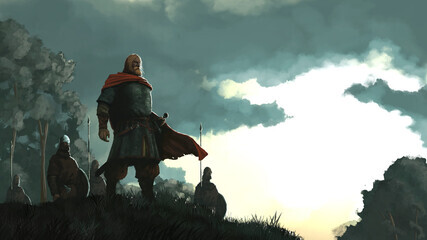
(art by lobard)
It’s worth noting that this would likely be part of a move that would increase all 2-skill-point-per-level classes to 4, while mostly leaving 4, 6, and 8 skill-points-per-level classes alone. A slight reduction of the total number of skills is also likely (with combining Spellcraft with some kind of Arcana and Religion skills near the top of the list for that). But that’s still a big shift for the fighter, from the class likely to have the fewest skill points to one that could be considered a skill-based class.
Extra skill points will only give a fight a marginal increase in combat ability (largely with Acrobatics and Intimidate checks), but could be a huge boost to their out-of-combat utility. Still, will it make other classes feel useless?
Here’s a look at skill points every Paizo PF1 class, including those from licensed properties (the omdura and vampire hunter) designed by Paizo, and base and hybrid classes. In a Revised Path game we might not need all those classes (I can easily see core and base class options making the arcanist, hunter, shaman, skald, and warpriest redundant as separate classes, for example), but for now I want to consider what I’d do for every official PF1 class.
This list presents class name, followed by PF1 skill points per level/proposed revised skill points per level
Alchemist: 4/4
Antipaladin: 2/4
Arcanist: 2/4
Barbarian: 4/4
Bard: 6/6
Bloodrager: 4/4
Brawer: 4/4
Cavalier: 4/4
Cleric: 2/4
Druid: 4/4
Fighter: 2/6
Gunslinger: 4/4
Hunter: 6/6
Inquisitor: 6/6
Investigator: 6/6
Kineticist: 4/4
Magus: 2/4
Medium: 4/4
Mesmerist: 6/6
Monk: 4/6
Ninja: 8/8
Occultist: 4/4
Omdura: 4/4
Oracle: 4/4
Paladin: 2/4
Psychic: 2/4
Ranger: 6/6
Rogue: 8/8
Samurai: 4/4
Shaman: 4/4
Shifter: 4/4
Skald: 4/4
Slayer: 6/6
Sorcerer: 2/4
Spiritualist: 4/4
Summoner: 2/4
Swashbuckler: 4/6
Vampire Hunter: 6/6
Vigilante: 6/6
Warpriest: 2/4
Witch: 2/4
Wizard: 2/4
Looking at all of those… I really am good with making the fighter a 6 skill point/level class. It joins existing full base attack bonuses classes with that many skill points, the ranger, slayer, vampire hunter, and those vigilantes that take the avenger specialization. There are a few other classes I may want to bump (both barbarian and swashbuckler come to mind), but I’ll tackle those when I get to those classes.
Now, any decision like this is something that has to be iterated. In the end, fighters might end up getting to pick 2 skills from a list and getting a free rank in those skills at each level, or the number of skills might be pared back so far that 4 skill points are more than enough. Or my plans for other fighter class features may make them so flexible and competent that extra skill points feels unneeded.
But any design has to start somewhere, and for my revised fight I’m going to start with 6 skill points/level.
Support
This post ends a fairly lengthy silence here on my blog, which was brought on by the side effects of my chemotherapy. This week is my break between my second and third courses of chemo, so I plan to post a lot more content than a typical week while I can.
If you want to help me cover cancer treatment costs, right now, the main way to offer your support is to purchase Like A Boss, a charity project that friends and colleagues within the game industry created to help pay my medical costs. You can pick it up by itself here, or as part of a bundle here.
Other options are to join (or increase your pledge level to my Patreon) or, if you prefer, donate directly through my Ko-Fi account – https://ko-fi.com/owenkcstephens
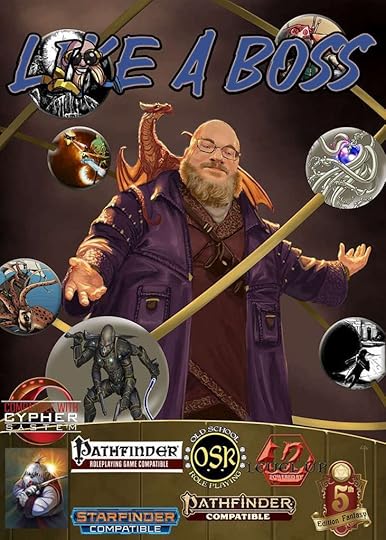
June 24, 2023
The 2dX System
I have been tinkering with my own core ttRPG ruleset for years. not to create something *better* than what exists, but to create something that prioritizes differently for a new play experience.
The current iteration of my core resolution mechanic is “2dX.”
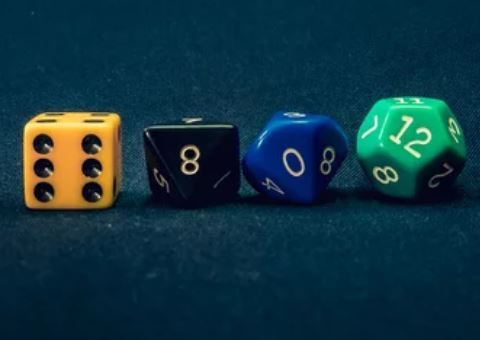
(Illo by Taran Schatz)
In a nutshell, it works like this.
You begin with 2d8 baseline in all abilities, with combat, attributes, and skills all lumped together in the same “abilities” system.
As you build a character, and later as your character improves, you can increase one or more of those dice to d10, or d12. (There are other things you can do to get more powerful as well). If a character is incompetent in a thing, they might only have 1d6+1d8, or even just 2d6.
When you attempt a task, it has a difficulty of 1, 2, 3, or 4, with higher numbers indicating greater difficulty.
When you roll, each result of “5” or higher on a die is a success. Each result equal to the task’s difficulty or less is a fumble. Any other number is just failure. If you have more successes than fumbles, you succeed. If you have more fumbles than successes, you fumble. Otherwise, you just fail.
Each result of 8 or more is a critical success. If you succeed and have at least 1 critical success, your attempt is a critical success.
The baseline critical success is that your task took no action, or half the normal time for things that take more than an action. The baseline fumble is that you can’t attempt the task again until you change the circumstances of your attempt (repositioning, getting help, trying after you have done research, or similar option).
For the base, that’s it. Roll 2 dice, see how many fumbles (1-4, depending on difficulty), 5+s and 8+s you have, and that tells you how you did.
Obviously, that’s just the START of a game system, but I’m really happy with it atm.
Support
If you want to help me cover cancer treatment costs, right now, the main ways to offer your support are to join (or increase your pledge level to) my Patreon or, if you prefer, donate directly through my Ko-Fi account – https://ko-fi.com/owenkcstephens
June 15, 2023
Game Concept/Campaign Setting — Metamorphosis Gamma
This is an idea in flux, as I hop between making a quick and easy custom ttRPG system for it, or applying campaign hacks I have already done extensive work on to make it a Starfinder-compatible setting. But for now, here’s part one of the core concept for it.
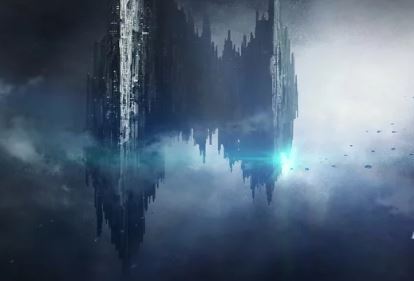
(Art by liuzishan)
Metamorphosis Gamma (Part One)
The Stellar Ark is vast, and has traveled for centuries. No one knows exactly how long, as historical notes (no matter how they are kept, with the sole exception of those scribed on the living flesh of sapient creatues) degrade with shocking speed (rarely outlasting the historians that create them). Nor does anyone know the true extent of its size it is, as the interior is broken into Zones, and each Zone is firewalled from all others by the Bulwarks which cannot be breached by any technology or power available to those inside. The creators, purpose, location, and destination of the Stellar Ark are similarly lost to time, if they were ever known to the inhabitants.
Further, each Zone has a Baseline, an established norm of that specific Zone, which includes a standard aesthetic, language, level of technology, and level of psionic energy. The System, which is never seen and not understood, rebuilds things to better match a zone’s Baseline (normally, but not always, a slow and gradual process). Thus histories, theories, philosophies, and even knowledge of the Stellar Ark’s existence are all molded to match the Baseline of the Zones within which they are developed or kept. Word of mouth can work around such Baselines, but of course is subject to the “game of telephone” effect as ideas are repeated over-and-over by different people.
Many dwellers within the Ark don’t even realize they are in a massive vessel hurtling at relativistic speeds through the void of space, especially those in Zones with low technological Baselines. Many think themselves in cavern systems established to survive an apocalypse on the surface of their homeworld, others that the gods folded the world inside out and the right chant of appeasement or sacrifice will again reveal the sky. And, of course, some residents of the Ark create their own stories not to seek or preserve the truth, but to craft narratives that justify their own actions and quests for power.
Between the invisible hand of the System and the impenetrable borders of the Bulwarks, most Zones exist in a state of large-scale stability. Skirmishes and political strife and the Baseline threats of a Zone may make life for those within it nasty, brutish, or short, but the culture of a Zone itself is generally resistant to change. But according to vague oral histories, three times over the centuries a Bulwark has opened… or fallen, as though to some massive glitch. These are the three great moments of Metamorphosis, when two or more Zones have come into contact. The first Metamorphosis was so long ago, no one knows exactly what happened. Even Metamorphosis Beta is far enough back no living creature has ever spoken to a creature that was present for it – grandmother’s grandmothers say it was before their time. But the most recent opening of a Bulwark, the Metamorphosis Gamma? It was just 10 years ago, and led to the Gamma War, which has faded into a cold detante, at least for now.
Support
If you want to help me cover cancer treatment costs, right now, the main ways to offer your support are to join (or increase your pledge level to) my Patreon or, if you prefer, donate directly through my Ko-Fi account – https://ko-fi.com/owenkcstephens
June 14, 2023
“The Mirk” Campaign Setting (Gear Concepts)
The Mirk is a post-apocalyptic, near future, system-agnostic exploration ttRPG campaign setting. You can find the introduction and index for the Mirk here.
In the Mirk, no electricity works unless it’s part of a biological creature’s internal process. So brain chemistry, nerve cells, and similar interior processes function, but an electric eel’s shock can’t travel beyond the surface of its own skin. Societies existing fully within the Mirk are an uneven blend of modern devices that still function or have been retrofitted to older mechanisms (such as wind turbines that have been reworked for direct mechanical work, grinding grain or driving belt engines rather than functioning as electric turbines), and recreated pre-electric technologies, including coal forges, steam engines, and animal power.
As the world In the Light has come to realize the Mirk is the most important mystery known to humanity, and may be both the greatest opportunity for and greatest threat to those living outside of it, the need to send expeditions into the Mirk for research, study, exploration (and if needed, defense), has become clear.
The organizations tasked with doing this have thus spent considerable time and money creating the most effective technologies for use within the Mirk. These often require computer design and electrically driven fine tool machines to design and manufacture, but once in existence function entirely without electrical parts.
I’ve been considering what such gear would look like, given real-world technological options. This is just the start of such gear write-ups, but I found them interesting enough to turn into an article.
Mirk-Compatible Gear
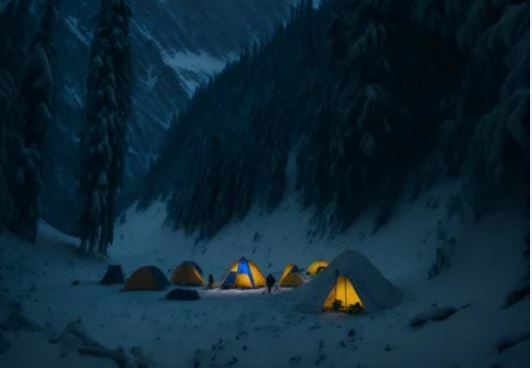
(Art by Usman)
Lights
Foxlights: Foxlight are powered by bioluminescent “foxfire” fungi. The light is strong enough to read by, and the fungi can be “refueled” with paste packed with their necessary nutrients. However, they are nowhere near as bright as gas or electric lights of the same size, don’t work in below-freezing temperatures, and the fungi can die rendering them useless. However they can be painted onto tiny surfaces, such as instrument dials and even weapon targeting reticules, and glow without radiation or requiring solar charging.
Gas Lights: Modern, super-efficient versions of the old kerosene or propane camping lanterns, gas lights use a variety of fuels (including some bulkier ones that can use a wide range of fuels, including vehicle fuel) to heat a fine ceramic mesh (known as the mantle) which glows when heated. They are heavier and do not last as long as electric lights, but can generate daylight levels of brightness and project it a considerable distance. However, small flashlight-sized units carry no more than a couple of hours of fuel and even big lanterns normally can’t run more than 8 hours without refueling, They also get hot, hiss loudly, require an existing fire source to light (or a flint-and-steel switch, which can be unreliable in poor conditions), and can be fire hazards.
Gas flashlights exist but aren’t popular as their either get hot to the touch, or have so much insulation that their brightness and duration is limited for any given size and weight. Gas torches have actually gained in popularity, with a small lantern on top of a long fuel-filled handle, which increases duration and allows it to be carried with a hand far from the heat source, though they do need to be carried or propped fairly upright to function.
Lumi Lights: Lumi lights use luminous paints, which can absorb energy from sunlight or other bright light sources, and re-emit it as a cool, heatless light for hours.
Rad Lights: The use of radium and similar radioactive materials for lighting has made a return in equipment designed for use in the Mirk. Rad lights need no recharging or battery source, and can be painted onto small spaces like instrument dials and weapon reticules. However, they expose you to, on average, 5 days worth of background radiation for every day you carry them. This goes up to 2 weeks per day if you have a rad light or flashlight size and power, which still gives off only a dim light (and needs a shutter mechanism to shut off the light). However, radiation-generated light does fluctuate in the Mirk, as if the light was passing through water, and Mirk explorers claim you can use that to find the edge of the Mirk, and sometimes even be forewarned if a powerful Mirktated creature comes near.
Motors
While most motors of all types (and nearly all vehicle motors) designed in the decades before the rise of the Mirk depended on electricity in some capacity, be that starter motor, spark plugs, power steering, or (obviously) electric dials and/or computerized systems, motors that have no need for electricity can be designed, and the drive to innovate and improve existing models has skyrocketed since the Mirk became a major world priority.
Diesel-N
The most common of these new motors are Diesel-Ns, with the N indicating that have no electrical systems at all. The most advanced of these use compression ignition and pneumatic starters. Vehicle motors add pneumatic power steering, hydraulic pump motor drivetrains, and regenerative braking via hydraulic accumulators, as well as diesel-fueled gas headlights and spotlights. They are just as efficient as other fossil-fuel motors, moreso in some ways, and while they require a somewhat different set of engineering skills to maintain are not any more complex or fragile, just different.
Other motor options include Flywheel, Gassifier, Pneumatic, and Steam.
Communications
Possible forms of ranged communication without electricity or radio include Carrier Pigeons, Colored Flares, Drums, Flag Codes, Polybius squares, Skywriting, Signal Guns, Smoke Signals, and Whistle Codes.
Documentation
Exploration calls for documenting things seen and results found, but in the Mirk that must be done without digital or electronic tools. Options include Chemical Photography (with zirconium flash cubes), Stenographs, and Typewriters.
Support
If you want to help me cover cancer treatment costs, right now, the main ways to offer your support are to join (or increase your pledge level to) my Patreon or, if you prefer, donate directly through my Ko-Fi account – https://ko-fi.com/owenkcstephens
June 13, 2023
Campaign Setting: Icehold (Adventure Seeds)
Icehold is a system-agnostic fantasy campaign setting built around a settlement sitting at 78 degrees north on an Earth-like planet. You can find the introduction and index for the Icehold Campaign Setting here.
These are short seeds of adventures to give a GM some idea what could be done with the setting.
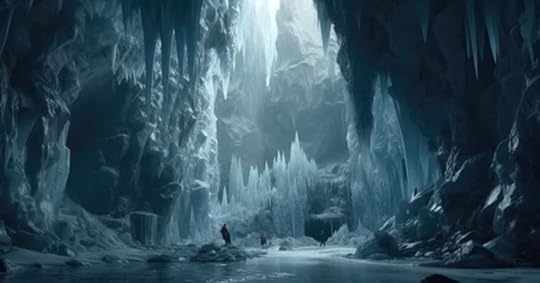
(Art by Andrus Ciprian)
Adventure Seeds
*It’s April 18th, and the sun has risen for the long Trade Summer. But the harbor is still hard frozen, there’s no sign of open water in the ocean for as far as the eye can see. The mountain routes remain entirely impassable.
Of course, the routes to Icehold don’t open on a tight schedule so no one worries… at first. But when May arrives, and there’s still no sign of even the slightest thaw? Jokullnaf citizens begin to measure the food left in their larders, and notice that the ice fishing hauls are getting smaller and smaller. Not only is the ocean not thawing, the ice fishers say their drill-holes are now deeper than ever, and the ice continues to thicken…
Food grows short. Hunting is dangerous under the best of circumstances. And if the PCs expected to be able to leave during the summer, they need to find a safe place to operate out of, possibly for a year or more. And safe needs to consider the chance of riots within Jokullnaf, raids from minor enclaves, and the risk of undead or other creatures from the colder deep north taking advantage of Icehold’s weakening position.
(This idea was the spark that caused me to create Icehold, and can be used as a jumping-off point that then incorporates one or more of the adventure hooks below.)
*As the long night of winter sets in, a massive fleet of Njor raiders going wolfing arrives. They haul their ships up on shore miles from Jokullnaf, and turn them into permanent buildings. These Njor paint skulls on their faces, and carry torches made of freezing blue light. Are they here to raid Jokullnaf for riches, beginning their own settlement, or is there a darker purpose to their arrival?
*Though rare, white ice dragons from the boreal north, and even red ice dragons from nearby mountain volcanos are known threats. But scouts are now reporting what appears to be a group of sickly gray dragons, who kill plants with their very presence and are surrounded by a poisonous fog that travels with them. One nearby enclave is already destroyed, and the scouts report the gray dragons are moving closer and closer with each day.
*In the depth of the long Winter Night, a bright green star appears, shining more brightly than even a full moon. To the far west, one of the volcanoes has gone from a dull red glow to the same hue of green. And when old man Gurthor died last week, he stood up and began trying to eat people, his eyes glowing with the same green. Has some ancient undead lord risen in a volcano lair? Is the green star a harbinger of destruction? Is everyone who dies now going to become an undead?
*A PC buys an expensive item in Jokullnaf, and is told doing so makes them officially a merchant. When the Councilor in the Merchant Seat of the Council of Principals is murdered, the PC is randomly selected to take the seat, and told they can’t leave until the murder is solved.
*A firestone mine has begun to burn uncontrollably, and miners are trapped beyond the flame. Their families offer the PCs a large payday if they can put out the mine’s fames, or save the trapped miners.
*Scouts and hunters claim yeti are becoming increasingly aggressive, and a minor enclave is wiped out with signs of claw marks on the bodies and walls. A new craftsman-merchant with the cheapest prices on blue iron gear begins a campaign for Jokullnaf to wage war with the closest yeti clans.
But while going about their normal adventuring, the PCs find a cave with a pile of burned bones, and partially-burned yeti bodies. Weirdly, all the yeti are missing their hands and have been skinned, and there’s signs of a camp sitting here for several days, and scraps of leatherworking and woodcraft work refuse.
In truth, the new craftsman-merchant has discovered blue iron in the waters near a yeti settlement, and has killed some young yeti to make fake yeti-claws and cloaks for brigands he is paying to pretend to be yetis to attack local enclaves. The yeti are preparing to make an actual attack in response to their young being killed, and if the Pcs are going to stop a bloody and pointless conflict, they need to find a way to communicate with the yeti and prove the craftsman-merchant guilty, and satisfy the yeti’s quite reasonable demands for juistice.
*When the long Trade Summer begins, the Silken Hearth guild house of courtesans receives word its owner died over the winter, and the guild is disbanded. Only three courtesans stayed at the Silken hearth to maintain the building, and now they have no patron, no funds, and no guild workers coming to keep the doors open. If they don’t find a way to turn a profit, they’ll lose the building and end up working in menial jobs. But, if someone wanted to turn their building into the headquarters for an adventuring guild…
Support
If you want to help me cover cancer treatment costs, right now, the main ways to offer your support are to join (or increase your pledge level to) my Patreon or, if you prefer, donate directly through my Ko-Fi account – https://ko-fi.com/owenkcstephens
June 12, 2023
Revised Path: Draft Power Attack and Vital Strike
This is a first draft of revised Power Attack and Vital Strike feats, for a potential Revised version of PF1. You can read about my design goals for such a project, and see an index of articles about it, here.
Some of my goals here are to simplify how these feats work, clarify how they are described, broaden their usefulness, and move their effectiveness towards the middle. What I mean by that is I want these to remain attractive options but not be something people feel every combatant character must have, allow them to be used in more situations, and both make them more effective for character concepts that don’t work well with them in PF1, while making them less effective for character builds that maximized their effectiveness in that game system.
I also shortened the main Vital Strike feat line, and named it so that in an alphabetical list of feats, Vital Strike comes before Vital Strike Improvement.
These are now the Draft 1.1 versions of these revisions.
I’ve added a few concepts here, new to PF1.
Base Damage: Effects that add to your base damage are added before any damage multipliers, such as from a critical hit.
Final Damage: Effects that add to your final damage are added after any damage multipliers, such as from a critical hit.
Original Damage Die: The damage an attack does before being modified by any class feature, feat, effect, enhancement, or effect. For example, the original damage die on a Medium longsword is 1d8.
Weaponlike: Many effects and rules note they apply to “weaponlike” attacks. Weaponlike attacks include all attacks made with weapons (and improvised weapons), as well as unarmed attacks and natural attacks. A small number of spells (such as spiritual weapon) are also defined as weaponlike.
Power Attack [Combat]
Prereq: Bab +1
Benefit: Before making any attacks in a round you may choose to use this feat. Until the beginning of your next turn, all your weaponlike attacks take a -2 penalty to their attack roll, and add your base attack bonus to final damage.
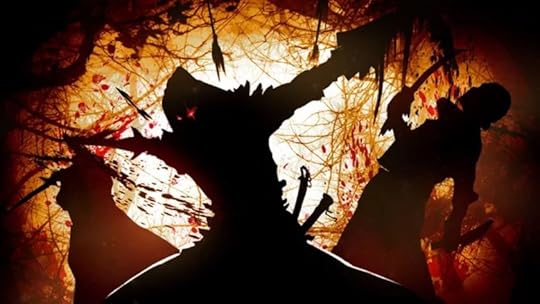
(Art by warmtail)
Vital Strike (Combat)
Prereq: Bab +6
Benefit: When taking a standard action or full action that allows you to take a single weaponlike attack (such as an attack action or Charge), for that attack you add additional damage dice to your final damage equal to the attack’s original damage die. For every critical damage multiple above x2 the attack has, you add another damage die to the final damage. The additional damage die is added to your final damage.
For example, a greatsword (base damage dice 2d6, critical multiplier x2) does 4d6 with a Vital Strike, while a great axe (base damage die 1d12, critical multiplier x3) does 3d12.
Vital Strike Improvement (Combat)
Prereq: Bab +11, Vital Strike
Benefit: You add an additional damage die to your Vital Strike attacks. If your base attack bonus is +16 or higher you instead add two additional damage dice.
Support This post ends a fairly lengthy silence here on my blog, which was brought on by the side effects of my chemotherapy. I began a ton of blog posts, but couldn’t focus long enough to end any of them. This week is my break between my first and second course of chemo, so I plan to complete and post all those entries, which should generate a lot more content than a typical week.
I’ll post as best I can for the two weeks after that, but I expect that next week will be spottier than this week, and the week after that may well be another dry spell. I’ll do my best to make it up in the following week, during my next break from chemo.
If you want to help me cover cancer treatment costs, right now, the main ways to offer your support are to join (or increase your pledge level to) my Patreon or, if you prefer, donate directly through my Ko-Fi account – https://ko-fi.com/owenkcstephens
June 2, 2023
Speculative Fiction Concept: Vamboge
Vamboge is a lost color, a hue that could once exist, but now cannot. It has been called the second yellow, the shadow of black, and a form of greenish-red, but all who have seen it agree those descriptions are all equally not quite true, though not quite wrong.
The ancient First Flower was of bright vamboge, as was the first meat that evolved, was killed, and turned to rot. The First Cogitators saw vamboge in the Fifth Cardinal Direction 64 million years ago, and could make pigments to match it with crushed aglaophotis, and powdered olieribos.
For the First Cognitators, vamboge was their Inviolate Pigment. They’d have called it holy, or profane, had they any concept of mere divinity, good, or evil. Their greatest sins and most horrific knowledge they scribed in vamboge and thin slices of their own mummified brains.
Had the First Cogitators survived, vamboge would have survived, and no crude ancestor to humans would ever have walked on two feet. But as they sought to imprint vamboge on everything, that oldest terrestrial society pulled at the fabric of spacetime too hard.
When the load of vamboge in a universe barely able to contain it grew too great for causality to contain, it slipped. Like an overfull ship sitting low in the water, pulled hard to one side, and then the ropes snap to have to roll so far back, it founders, and sinks.
As their entire existence unraveled, the First Cognitators themselves could not say if their blighted culture’s fall erased vamboge, or if vamboge’s erasure drove their culture to cannibalize itself. Each of the alien minds sought to preserve a private mote of inviolate hue.
Their behavior could be called madness, but it was not some random gibbering state of chaos. The First Cognitators desired vamboge above all, the same possessive need as drives addicts, tyrants, and poets. To sustain one more moment with the tint was worth losing all else.
So the impossible cities fell — remembered only by names their creators never used: Haurthul, Iringol, and Karak-Ynaros. No terrestrial material can reflect the unlight of vamboge, nor any mortal eye see it. And in a just universe, that would be the end of it.
But the universe is neither just, nor unjust. It simply is as it is, and though humans cannot see or create the Inviolate Hue, under just the wrong circumstance, they can experience it. Many names exist for mortals who have tasted vamboge, but the most accurate is just “the Damned.”
Most commonly the taste of vamboge comes from an altered state, some transcendent pleasure or pain, love or hate, awareness or dullity, combined with pressure upon the brain. Some few tainted drugs may break the final gap, or a flickering moment of temporary death.
A tiny fraction of humans who hear vamboge’s frequency remain free of it. Haunted, perhaps, or damaged beyond obsession, but free. But most do not. Once the Inviolate Hue enters their senses, they will do anything to experience it again, just as the First Cogitators did
Once a human craves to know such an impossible secret, other hints can be found. Forbidden books, the rantings of the vamboge-tainted from other eras, the echo of impossible colors within the search for a unified field theory, or the lost name of god may all give a clue.
The wealthy infected with vamboge are often seen as eccentric or visionaries. Any others are quickly labeled crackpots, madmen, idiots, addicts, and cultists. Some such labels are unfair. Most aren’t. Many destroyed themselves before they can harm the world. Other’s don’t.
Vamboge is neither the least common, nor the most dangerous secret of the First Cogitators, and seeking their relics to find that Inviolate Hue often unleashes hungrier mind viruses and bloodier sciences. Nor are the First Cognitators the only secrets best forgotten.
Secret societies have formed, vast research facilities built, and every possibly kindness and cruelty has been unleashed over thousands of years for vamboge, and brighter and darker horrors have been sought, found, and even built. All for a color that cannot exist.
Support
Right now, the main ways to offer your support are to join (or increase your pledge level to) my Patreon or, if you prefer, donate directly through my Ko-Fi account – https://ko-fi.com/owenkcstephens
May 31, 2023
Revised Path: Draft Magic Missile
This is a first draft of a revised magic missile spell, for a potential Revised version of PF1. You can read about my design goals for such a project, and see an index of articles about it, here.
For this spell, one of the things I want to do is allow this iconic spell to remain an interesting choice in play at all character levels. Also, it’s ability to never miss and to damage insubstantial creatures are useful functions well past when it’s damage is worth taking your action to harm a foe.
I’ve added a few concepts here, new to PF1.
Minor Ritual: A minor ritual requires you to keep casting the spell until the beginning of your next turn, during which time you are flat-footed. You cannot cast a minor ritual while entangled. (I currently envision Entangled applying when you are wrapped up, grappled, or squeezing.)
Variable Level Spell: A variable level spell (VLS) can be prepared and cast at multiple spell levels. If you know a VLS at a given spell level you can prepare or cast it at that level or any lower spell level you can cast. Each time you gain a higher level of spells known you may choose to learn a VLS at that higher level, and then may replace the lower-level spell known with a new choice.
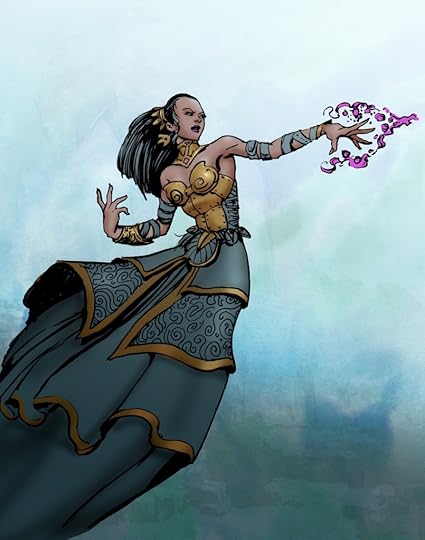
(Art used by permission. © Thomas Denmark. All Rights Reserved. thomasdenmark.com)
Magic MissileSchool evocation [force]; Level arcane 0-9
Casting Time standard action, full action, or minor ritual
Components V, S
Range 150 ft.
Targets up to five creatures, which must be within a 10-foot radius
Duration instant
Saving Throw none; Spell Resistance yes
You create a missile of magical energy that unerringly strikes its target, dealing piercing damage as a force effect. It cannot target creatures with total cover or total concealment. Objects are not damaged by the spell.
For every two caster levels beyond 1st, you gain an additional missile – two at 3rd level, three at 5th, four at 7th, and the maximum of five missiles at 9th level or higher. If you cast this spell as a full action, you gain one additional missile. If you cast it as a minor ritual, you gain two additional missiles.
If you shoot multiple missiles, you can have them strike a single creature or several creatures. A single missile can strike only one creature. You must designate targets before you check for spell resistance or roll damage.
The damage dealt by each missile is determined by the spell level magic missile is cast at.
Lvl/Damage
0 / 1 pt.
1 / 1d4+1
2 / 1d4+2
3 / 1d6+2
4 / 1d6+3
5 / 1d8+3
6 / 1d8+4
7 / 1d10+4
8 / 1d10+5
9 / 1d12+5
Support
Right now, the main ways to offer your support are to join (or increase your pledge level to) my Patreon or, if you prefer, donate directly through my Ko-Fi account – https://ko-fi.com/owenkcstephens
May 29, 2023
Revised Path Design Goals
A revised PF1. Something you could still use to run PF1 adventure paths, for example, but that had significant quality-of-life upgrades and improved organization,clarity, and all-levels play.
I’ve been thinking about these things for years, and even worked on it briefly before other projects came along (and then became years late). But, for whatever reason, this has been coming to the fore a ton in the past couple of days, so…
Just as the original game system went from 3.5 to a very different 4.0, and PF1 was a branch off 3.5 (without being exactly the same), the idea here is that with a second edition of PF2 being very different from PF1, this would be a branch off PF1 (without being exactly the same).
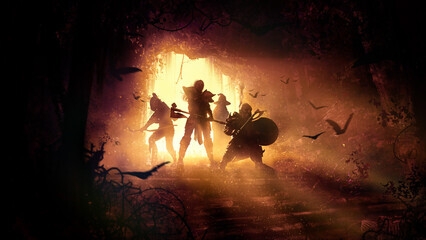
(Art by warmtail)
What would the design goals be? Well, to start:
1. Make the game more stable at all levels of play.
2. Make combat run faster.
3. Reduce the total amount of math, without reducing granularity or customizationability.
4. Faster, easier rules for making monsters.
5. Support archetypes in the core books, Make them a set of simple, easily understood rules allowing a wide range of classes to take the same archetypes (so, for example, if you make a Swordmaster archetype, most combatant classes can take it).
6. Nonspellcaster classes gain a wider range of built-in options that allow them to impact combat and noncombat encounters beyond doing damage.
7. A formalized set of rules for designing and running skill-based encounters.
8. Rename and reconceive “races” to eliminate ability score bioessentialism and delink cultural and biological benefits.
9. Establish three modes of spellcasting — prepared, spontaneous, and “blended” (like the arcanist), and allow any spellcasting class to be able to select any of them. Ensure the distinctiveness of spellcasters is not dependent entirely on their spells — if a sorcerer and a wizard both select spontaneous spellcasting, they should still feel distinct and different.
10. Both reduce the total number of classes (which sits at 39 even if only counting base, core, and hybrid classes from official PF1), and add new classes that fill missing niches (such as a good warlock).
11. Revised rules for crafting and magic item creation, with guidance explaining where some decisions come from (such as the sidebar notes I added in the Loot 4 Less product line).
12. Establish some “common” rule variants, including spell points and automatic bonus progression, which are kept in mind for all relevant sections of the game and expansions.
13. A thorough spell-by-spell review of the core spells to tweak for game balance.
14. A thorough item-by-item review of magic items, so those that do interesting things rather than just give bonuses can be gained at low enough levels for them to still feel like attractive choices.
15. Revise combat maneuvers to be simpler, faster, and worth attempting as PCs, without always being the best choice to shut down a foe.
16. Reorganize rules and review that all needed rules exist (such as burrow), are easily found, and simply explained.
17. Review and as appropriate add PF1 errata.
18. Rethink Prestige Classes.
19. Where lack of keywords or clear definitions have caused issues or clunky language (what is a “weapon?,” how many hands is a creature assumed to have?, can a horse use a magic glove?), clean up and streamline language and add late-game solutions to the core.
20. Review and revise favored class bonuses and traits, with an eye toward balance and not having some ability core to popular class builds being locked behind a single trait.
21. Review and revise subsystems introduced outside the core (such as downtime, building organization businesses and buildings, ruling countries, and so on), with an eye toward balance and having as few such systems as possible, integrated into core rules, while still supporting all the elements they allow for.
22. Design the simplest possible introductory version of the game at the same time as the core. Such an introductory game should introduce the most important rules in a way that is 100% how those are handled in the core game, while still radically reducing the cognitive load to learn the game or teach it to others.
23. Find ways to reduce the work required for a GM to run the game, including both simplifying the math a GM is required to deal with when designing things and the effort needed to build encounters.
24. Radically simplify AoO rules without removing the tactical element they represent.
25. Radically simplify the planning needed to make specific character builds. This includes reducing feat taxes and feat chains, while still protecting spotlight time and level-locking some abilities to higher levels of play.
26. Review and revise conditions, to have as few conditions as possible without reducing granularity or breadth of the system.
26. Review and revise monster/NPC stat blocks, to make them easier for GMs to use and (if possible, but as long as I am listing all the things I’d *like) shorter and easier to read.
27. Review and revise how alignment is presented, and how rules interact with it.
Now, that’s a LOT. I’m not tackling all that all at once, and for the most part aren’t tackling it at all until I am in better shape, and have caught up on other massively-overdue projects. But I *have* taken a first, tiny stab at some of these ideas on social media.
I’ll show those off later this week, in a Draft 1.1 form.
Support
Right now, the main ways to offer your support are to join (or increase your pledge level to) my Patreon or, if you prefer, donate directly through my Ko-Fi account – https://ko-fi.com/owenkcstephens
May 23, 2023
Health Update: Physical Therapy and Port Surgery
For background: I had a pulmonary embolism in February 2023, as told in these articles: Part One, Part Two
The bleeding I’d had before that meant I’d already scheduled a colonoscopy to look at it (which was going to happen in May), but my colonoscopy got moved up, as told here.
The bleeding I had already scheduled a colonoscopy to look at (which was going to happen in May) got my colonoscopy moved up, and it happened last week as told here.
That resulted in a cancer diagnosis , and I saw a colorectal surgeon as told here. Then a cardiologist, as told here. Then I was nearly tortured by an MRI, as told here.
Then I had to offer a blood sacrifice to a CAT scan, got a massive kidney infection, and was rediagnosed as having late Stage 1, rather than Early Stage 2 cancer, as told here. That led to my case being presented to the shadowy and mysterious Tumor Board, and the decision to start me on three months of Chemotherapy, as told here.
All caught up? Okay then.
So, the decision to engage in Benevolently Poisoning me almost immediately had implications. First, I was assigned to physical therapy, both to increase my stamina to help reduce the impact of chemo, and to train me to move my larger-than-life body around if the chemo makes me weak. I’ve done four sessions in the past week, and it’s exhausting. It’s especially exhausting since I got surgery for my port in the middle of that, and am anemic and on blood thinners.
None of that means it’s not a good idea. It’s just an exhausting good idea. Those happen. Like, I dunno if I could climb 50 feet of cargo netting. But if I was drowning in a sea covered with burning oil and a ship threw a cargo net over the side and told me to climb the 50 feet up to the railing so I could survive? You can bet my exhausted ass would be climbing, because that would be a good idea.
Well, metaphorically, there’s a section of oil-covered burning seas in my colon trying to kill me. (And no, this is not a joke about spicy food. Or, at least it wasn’t until just now. I guess it is now, which belabors the point more than just a little, but I mean you’re reading a blog about someone’s cancer and if I don’t do these silly little asides now and then it’s going to be too grim for me to want to write it, much less ask anyone to read it. Or, for that matter, be so inspired by it as to pay me for it — see “Support,” down below to see what I mean.)
So, the point with the cargo net story was supposed to be that I am fighting for my life. So I don’t have to like physical therapy, I’m doing it as told, when told.
In the middle of this run of physical therapy, I had to get my chemo port installed. This is a little silicon injection site, inserted just under my skin (it makes the surface skin swell by about the same size of the last joint of my pinky) with a tube connecting it to a vein that feeds directly into my heart. Because if I’m going to have to make a Save Vs Poison to beat my body’s cancer cells, I’m making sure the poison tracks down every last one of the little fuckers, wherever they hide.
We happened to have the same anesthesiologist for my port as my wife had for her hysterectomy last month. He walked into the ready room, looked at me in the surgical gown, looked at my wife in the visitor chair, and said “Y’all switched seats! So, second verse, same as the first.”
I like him.
And he took my pain, breathing, and anxiety very seriously. Due to my breathing issues and anemia, he decided to put me all the way under (he normally does twilight for port surgery), and be in charge of my breathing. Which is scary, but he talked me through every step, made sure we have the exact mask he wanted, my head at exactly the angle he wanted, and so on.
Once I was in the OR, he told me medicine was flowing, and I should feel tingling and burning. I didn’t, so he stopped absolutely everything, and checked every connection. It was all fine, I just had no reaction to the first medication. Then he began the second, and I grunted “Oh, THERE is the tingling and burning!”
I also want to say that I was wearing an overglorified napkin at this point, and it’s neither dignified nor warm. to help with both, I was laired in nice, warm, heated blankets. But my hands and feet get cold fast, and one of the nurses took it upon herself to lean over and hug me, rubbing my arms and flank until I warmed up. And… it was nice. Comforting.
Then, the anesthesiologist told me we were beginning the third medicine, and someone put an ice chip into my mouth and asked me how I was doing.
Now, yes, objectively I am aware things must have happened between third medicine and ice chip. (Even Star Trek transporters aren’t THAT fast.) In fact, when I took that ice chip, I was aware that it was not the first ice chip I’d been given, and that I was in the Recovery Room, but I had absolutely no memory of anything after “third medicine” was said.
I think that’s what the Gap, in Starfinder, must have felt like.
And, I don’t remember anything ELSE in Recovery either, though I was in there for an hour. My next memory is being back in my prep room, with my wife and a nurse, aware that I hurt a little. I didn’t CARE about the pain, but I knew I hurt, Except for my throat. It felt like I had the worst case of strep ever. Which I’d been warned to expect, as a result of the breathing tube. But it still sucked.
Then, the nurse offered me a selection of drinks. I have no memory of anything but hearing “hot chocolate,” and knowing that was what my throat needed.
So, here’s a piece of advice: If you’re coming off full sedation and painkillers, still so groggy from surgery you feel the room swaying back and forth, and the nurse offers you a drink for your throat, do not select hot chocolate.
Because you’ll have no hint if you’re burning your mouth as you drink it, until hours later when painkillers begin to wear off.
My wife assures me I sounded and looked quite clear-headed. So when the nurse warned me the hot chocolate was very hot, and I just happily sipped away through a tiny stir straw, my wife figured I knew what I was doing.
Nope!
Things are a blur again for a while after that. I was magically dressed (again, my wife Lj assures me there was no magic involved, just hard work on her part), and teleported to the comfy chair at home. Then food materialized, and disappeared, and then my wife and housemate faded away and I was left snoozing in the comfy chair, in the quiet.
Or, that’s how I remember it.
It took me two full days to really recover, and even now a third day later my incisions hurt like heck, I suspect due to the blood-thinner-induced bruising (as I had to go back on blood thinners the day after surgery).
But I’m okay. Which is good, because tomorrow my chemo begins.
Save vs poison!!
Support
Right now, the main ways to offer your support are to join (or increase your pledge level to) my Patreon or, if you prefer, donate directly through my Ko-Fi account – https://ko-fi.com/owenkcstephens
Owen K.C. Stephens's Blog
- Owen K.C. Stephens's profile
- 7 followers



